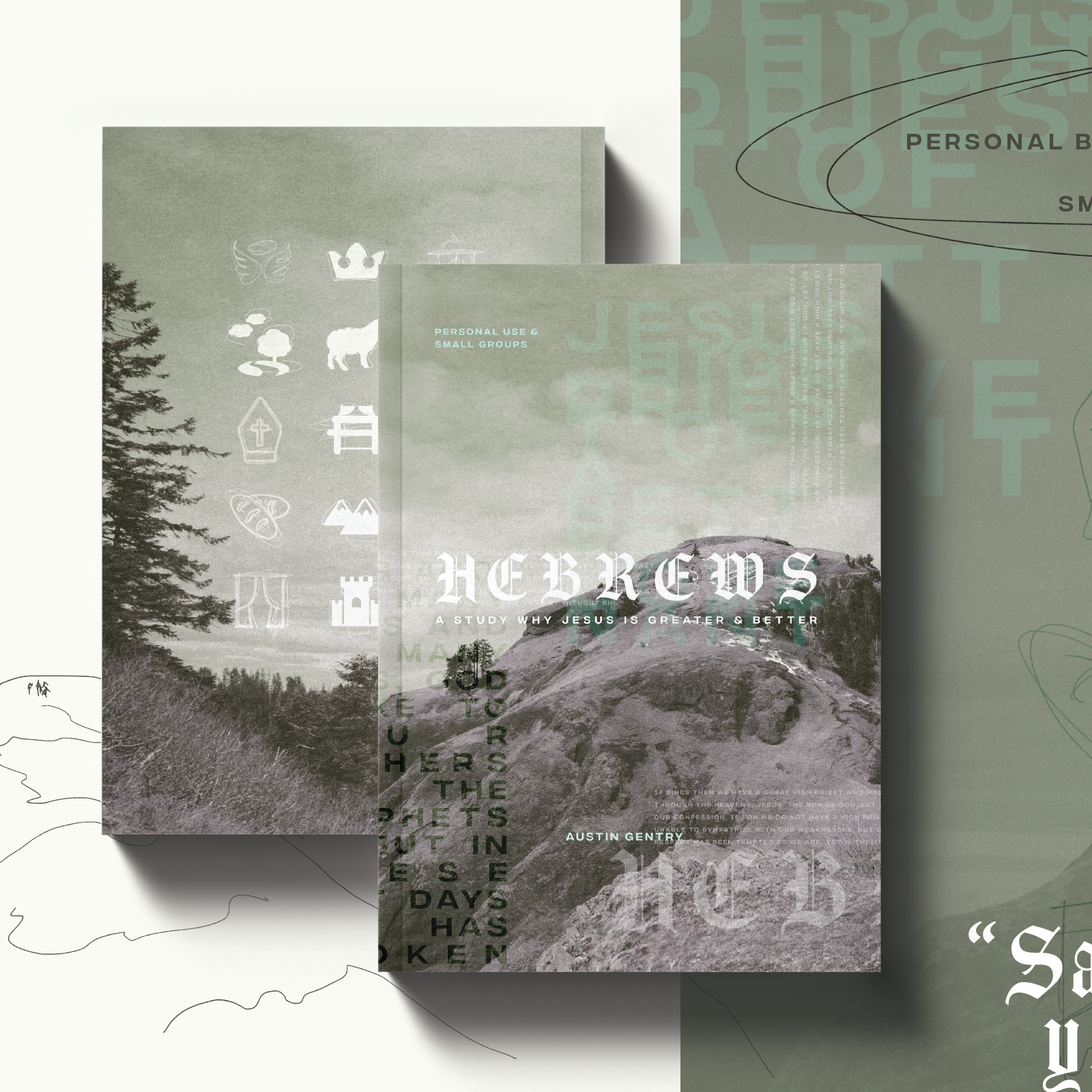
One of the most powerful things you can do in a time of walking through a valley is to gradually shift your perspective from one of ‘enduring’ to one of ‘embracing.’ It might sound like a small, minute matter of semantics, but it very well may be the difference between your ‘barely surviving’ or ‘richly thriving’ in the midst of a valley.
Concerning the word ‘endure,’ maybe you’ve heard it said, “Well, we’ve just got to endure this season!” Or, “If we can just endure this, hopefully we’ll be fine when life returns to normalcy.”
And concerning the word, ‘embrace,’ perhaps you’ve heard it used in the context of, “We’re going to embrace this season for what it is and make the best of it.”
Perhaps those general uses of the terms make it seem as though they are slightly interchangeable. But in further comparing and contrasting ‘enduring’ and ‘embracing,’ it can help us draw greater clarity between their important distinctions. In reality, enduring and embracing are not just two slightly synonymous words, but two entirely different perspectives of mind and postures of heart.
How so? Let’s tease them apart, definitionally and then practically. In doing so, we’ll see how these two words actually indicate what we really believe about the valley we’re in and the God who’s there with us, if at all.
First, the word ‘endure’ already suggests that what you’re going through isn’t desirable, and therefore, you must push through it and retreat from it as much as possible.
But the idea of ‘embrace,’ however, suggests a broader view. It agrees with ‘enduring’ that what you’re going through isn’t ideal, but that it presents opportunities for you to grow through it and glean from it as much as possible.
Based on their definitions, you can already begin to see how they split off substantially from one another in their response to hardship. But how they have a bearing on real life situations and real valleys reveals how different they truly are. Through the process of comparison and contrast, we can more clearly see how different these perspectives and postures bear on the valley and our experience of it. And it does so in several main ways:
First, enduring or embracing indicates our approach.
Enduring vs. Embracing: Approach
For example, when we approach a valley with the ‘endure’ mindset, we are essentially already waving our white flag, surrendering, and conceding to it. Approaching a valley to only endure it means that we’ve already given fear and uncertainty not only the first word, but also the final word—and oftentimes, before we’ve even gone a couple steps into it. The idea of ‘enduring’ basically communicates a type of surrender to the valley’s control over our life.
But approaching a valley with the ‘embrace’ mindset is fundamentally different. Instead of waving our white flag to the valley and surrendering to it, embracing means to surrender to the Good Shepherd. Embracing does not mean conceding to the ‘what,’ but conceding to the ‘Who.’ It means resigning our own sense of control and worry, and embracing His control of the valley more than the valley’s control on us.
But how we approach the valley serves as a window into the soul, exposing what we really believe about it and God.
Enduring vs. Embracing: Belief
For instance, the mindset of ‘enduring’ stems a posture of unbelief because it assumes that the Good Shepherd is not in control. That His wisdom is not greater than our own. That His love does not have our best interest at heart. Enduring believes there is a reason to worry because the Good Shepherd might get it wrong, and bitterness is justified because it’s believing He got it wrong.[1]
The mindset of ‘embracing,’ however, is a posture of faith because it affirms the Good Shepherd is in control. Believing His wisdom is higher than ours; His love deeper than ours; and His power greater than ours. Embracing believes there is no reason to worry because He will never get it wrong, and no reason for bitterness because He has never gotten it wrong.
Enduring the valley communicates putting our cards on the table but keeps our chips up close—revealing that we disagree with Him and will not buy in. It’s an unbelief that says risk with me is safer and wiser than risk with You.
But embracing the valley communicates not only casting our cards on the table, but also pushing our chips into the middle—revealing that while we don’t know the outcome, we’ll go all-in. It’s a faith that says risk with You is better than risk with me, because You know best and You hold all the chips anyways.
Endure says, “This isn’t from God, therefore, I must push through in my own strength.”
Embrace says, “This is from God, therefore, He will strengthen me in his own grace.”
Endure says, “This isn’t from God, therefore, I must take control; and I’m justified to worry.”
Embrace says, “This is from God, therefore, I can give Him control and be freed from worry.”
Enduring is the belief that you must brace yourself, because clearly God has left you out to dry. But embracing is the belief that God embraces you, so you can keep moving forward with eyes of faith.
Enduring presumptuously assumes the worst, aggressively inflames unfounded skepticism, and drowns ourselves in our own freshly-made cocktails of doom and gloom. Enduring believes in our own wisdom first—about what we think the valley will be like—which will do us far greater harm than even the valley ever will.
Charles Spurgeon powerfully says…
“Many of God’s people are constantly under apprehensions of calamities which will never occur to them, and they will suffer far more in nearly dreading them than they would have to endure if they actually came upon them. In their imagination, there are rivers in their way and they are anxious to know how they shall wade through them or swim across them. There are no such rivers in existence. But they are agitated and distressed about them all the same. They stab themselves with imaginary daggers; they starve themselves in imaginary famines; and even bury themselves in imaginary graves.”
Oftentimes, the ‘X’ factor that makes our valley significantly worse and your sense of ‘enduring’ that much more dreadful is our broken tendency to believe in ourselves and our own wisdom more than God’s.
Embracing, however, means believing our Good Shepherd is with us and has a purpose in the valley and through the valley. It means taking Him up on His plans and taking hold of His hand—realizing his constant, unconditional hold on you—and not allowing anything else to have a stronger hold. It means walking forward with eyes of faith, eager to see what new things He’s doing in the transition and trial. Instead of conceding to a valley we know hardly anything about—and surrendering to future fears and uncertainties that are at the time as substantial as ghosts—embracing means to walk forward trusting not what you see but Who goes with you.
Enduring means waiting for the worst to happen and eagerly anticipating trial behind the bunker of our own the cheaply-made fortresses of control.
But embracing means lifting up our heads not in naïve pride, but in anticipatory humility about what can possibly be gleaned along the way and what greatness purposes God has in store. In this way, you’ll agree with David’s faith in the Good Shepherd, “Wait for the LORD; be strong, and let your heart take courage; wait for the LORD!” (Psalm 27:14, ESV)
Enduring the valley means identifying ourselves as victims of chaotic, nonsensical circumstance. But embracing means identifying ourselves as in all things as victors in Christ Jesus (Rom. 8).
Enduring primarily means ‘waiting it out’ until the season reverts to the way we’d otherwise prefer. But embracing means ‘leveraging every minute’ until the season passes.
Truly, how we endure or embrace exposes our true beliefs about God and the valley; and it also drastically shapes our posture along the way.
Enduring vs. Embracing: Posture
For example, enduring essentially manifests in paralysis and hibernation until the storm passes. But embracing manifests in taking God at his word, and taking our next step.[2]
Enduring coils you inward. Your head, hands, and feet tucked in close to your chest while your back assumes the defensive position. You’ll naturally assume a fetal position of mental, emotional, relational and spiritual for as long as you believe the season or circumstance will continue.
Embracing, however, doesn’t coil you inward; it opens you upward and outward. Your head, hands and feet don’t retreat in, they spread out. Your face looks to heaven, your hands open wide to receive and to be held, and your feet find their footing and gain ground again. You don’t assume a position of personal defensiveness until the season or circumstance stops, as if you are your own refuge and fortress. Instead, embracing what you’re going through means trusting that “God is your refuge and strength, a very present help in trouble” (Ps. 46:1).
When you choose to embrace instead of to endure, you open up your ‘faith’ receptors, to experience and absorb every ounce that God has for you in this season, which He preordained by his grace.
Enduring shuts you in and closes you off based on sight.
Embracing opens you up and stretches you out based on faith.
Enduring means a white-knuckled, vice grip approach to circumstance until you’ve bled yourself bone-dry and drained every ounce of your strength. Embracing means an open-armed, acceptance and admission to every circumstance and all things, believing that “God does not withhold anything good from those who walk uprightly” (Ps. 84:11).
Enduring means bowing to the valley, but embracing means bowing in prayer.
Enduring says, “Look around, and worry!” while embracing says “Look around, and worship.”
If anything, these valleys that force us to endure should show us the vanity of embracing our own wisdom and sense of control. And embracing the valley should beautify to us the only sureness in our valley, which is the Good Shepherd’s embracing of us.
After all, don’t the valleys teach us that ‘control’ was merely a delusion after all, and our sense of worry a self-inflicted pain?
The irony is that whenever you approach a season only to endure it, you hardly endure it—if even at all. But when you embrace a season, you are much more likely to not simply endure and survive, but to develop and thrive—and not merely in spite of it, but because of it!
Enduring the valley and embracing the valley are similar only in the sense that they both are in it. But they are wildly dissimilar in terms of their experience of it. And it’s a difference between strength and weakness, faith and disbelief, victim and victor, depth or brittleness, growth or stagnation, empathy or callousness, warmth or coldness, life or death.
No one says, “I’m going to endure a marathon.” Whoever says that will probably fail to finish…
…training.
But someone who approaches a marathon and its training with a mindset of embracing will certainly endure not just the training, but also the race itself. And in the process, somehow glean a deep feeling of gratitude, enjoyment, and learnedness through it—yes, through all of its injuries, soreness, sweat, and sacrifice.
And so it is with us, too. Embracing a season will develop us, deepen us, and stretch us in ways that we’d otherwise forfeit if we merely resigned ourselves to the chopping block of enduring.
So, in your season or circumstance—which may feel like a marathon in many respects—don’t choose to endure by sight, embrace by faith.
Let the
rain crash down on you for this season; because after all, fruit grows in
the valleys.
[1] Tim Keller, slight quote.
[2] Joni Eareckson Tada, quote used in Barnabas Piper’s book, Help My Unbelief, p. 52.


